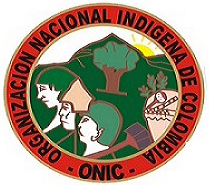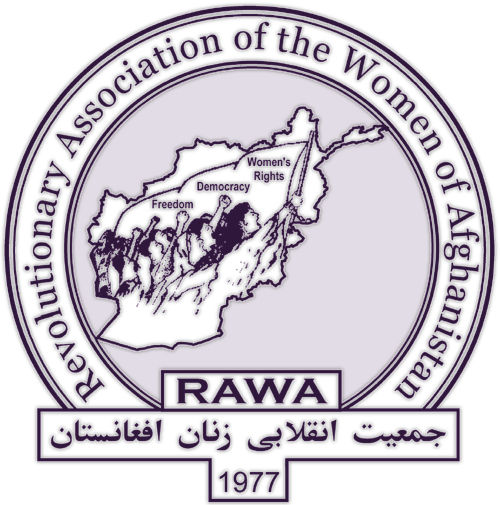Andean Theater
Latin America: left leaders diss OAS rights group
The 42nd General Assembly of the Organization of American States (OAS), held June 3-5 in Cochabamba, Bolivia, was dominated by calls from leftist South American leaders for restructuring the group and ending domination by the US. Bolivian president Evo Morales, the host of the meeting, set the tone by declaring that "for the OAS there are two roads: either it dies in the service of imperialism, or it is reborn to serve the peoples of America." Headquartered in Washington, DC, the OAS includes every country in the hemisphere except Cuba, which was denied representation in 1962 under pressure from the US.
Peru: lawmakers resign from ruling party as mining conflicts escalate
Three prominent lawmakers publicly resigned from President Ollanta Humala's ruling Gana Perú coalition June 4 over the government's handling of protests against the Xstrata Tintaya copper mine in Cuzco's Espinar province. Legislators Rosa Mavila and Javier Diez-Canseco issued a joint letter addressed to Humala, charging that his government had taken a "confrontational" stance against protesters, and rejected dialogue. "Those who were defeated in the elections have become co-governors," the legislators said, referring to Humala's tilt to the pro-corporate politics he campaigned against last year. Cuzco region congress member Veronika Mendoza issued her own statement, calling a press conference to announce her resignation from the Gana Perú bloc, at which she wielded a Health Ministry study on the Xstrata Tintaya mine she said had been suppressed. "In this document, it is confirmed that the maximum limits for arsenic and mercury have been exceeded" in the area around the mine, she said. "Quantities of heavy metals above the permitted levels were found in water used for human consumption." (Cronica Viva, Peru.com, June 7; Peruvian Times, June 5; RPP, June 4)
Peru: police fire on protesters in Cajamarca
An "indefinite" paro (civil strike) was initiated in Cajamarca, Peru, on May 31 to oppose the pending mega-scale Conga gold mine, with thousands-strong marches held in the regional capital. Hundreds of National Police troops were mobilized to the streets, and on June 1 a new march was met with a police charge and even fired shots. The violence broke out when police in full riot gear attempted to clear an open-air kitchen that a group of women had established on a traffic island in one of the city's main thoroughfares to feed the protesters. Although the incident won little media attention, video coverage posted on YouTube appears to show two shots being fired, followed by a woman crying out and collapsing on the pavement. The sparse media coverage did not indicate anyone was actually hit by bullets, and police assaulted the cameraman immediately after the shots, cutting short the film. The incident comes days after four protesters were shot by police in a similar conflict over a mineral project in Cuzco region. (Radio Nacional, June 1)
Peru: four dead, mayor arrested in Cuzco mining conflict
The conflict over the Xstrata Tintaya mine in Espinar province of Peru's Cuzco region escalated May 30 as dozens National Police troops in full riot gear stormed the office of the mayor, Oscar Mollohuanca, in the midst of a community meeting he was convening there on the issue, and arrested him—presumably on charges of leading the recent angry protests at the mine site. The raid came without warning, and Mollohuanca had not been told there was a warrant for his arrest. He was initially taken to the police outpost at the mine site, but as a crowd gathered there demanding his release, he was transferred to Cuzco's regional capital. “The detention of the mayor is a huge worry because it has ruined the dialogue process," Veronika Mendoza, a legislator from the ruling Gana Perú coalition, said on Canal N television. Cuzco's regional president, Jorge Acurio, also protested the arrest, charging that Prime Minister Oscar Valdés had betrayed his pledge to suspend further arrests and initiate a dialogue.
Colombia signs pact with China for inter-oceanic pipeline
Colombia's Juan Manuel Santos and Chinese President Hu Jintao presided over the signing in Beijing May 9 of nine agreements to boost cooperation in a range of industries, emphasizing the oil sector. One pact calls for Colombian parastatal Ecopetrol to join with Sinochem conglomerate and the China Development Bank to build an inter-oceanic pipeline through the Andean country. The plan for the "Oleoducto al Pacífico" is to begin with a feasibility study to be lead by Sinochem's local subsidiary Emerald Energy. Colombian Energy Minister Mauricio Cárdenas, who was also on hand for the signing, said Chinese partners have taken the decision "to enter our country in full, with activities of exploration, with activities of production..." (Portafolio.co, Reuters, May 11; EFE, May 9)
Colombia: "armed strike" against glyphosate spraying
Jimmy Díaz Burbano, governor of Colombia's Putumayo admitted that large areas of the lowland jungle department were shut down by a "paro armado"—a civil strike enforced by the guns of the FARC guerillas. He said the strike had been called in response to government spraying of the glyphosate herbicide across the territory along the Río Putumayo to wipe out coca leaf crops. Díaz said spraying hurts the campesinos and provokes a reaction from the illegal armed groups they sell their coca to, calling for a dialogue on the issue. "I will be a bridge between the community and the Colombian state and do everything possible to assure that the people are heard," he said. (Diario del Sur, Nariño, May 29)
Bolivia: Aymara stand up to authorities over Potosí mining project
On May 24, the Federation of Ayllus of North Potosí announced that they will march on La Paz to demand the release of Cancio Rojas, the mallku (traditional chieftain) of Sacaca village (Ibañez province, Potosí department), who was arrested on charges related to angry protests over the local operations of the Mallku Khota Mining Company (CMMK), owned by Canada-based South American Silver. Village authorities say several residents were injured in a clash with National Police and private security personnel the previous day in the nearby municipality of Acasio (Bilbao province), where protesters attempted to occupy the mining camp. (See map.) CMMK—which hopes to exploit deposits of the rare element indium, used in semiconductors—says its own personnel were held against their will by the protesters. Rojas is being held in Santo Domingo de Cantumarca prison in Potosí, the regional capital. In a statement from his prison cell, Rojas charged, "They want to decapitate the indigenous movement to appropriate the water of the territory of Mallku Khota, this is the clear intention of the company, and they are extending strong influences" on the local officials.
Peru: new mobilization against Conga mine prepared
The struggle against the planned Conga gold mine in Peru's northern region of Cajamarca continues to gain ground, with formation of a "Unitary Struggle Command for the Northern Macroregion and Oriente," coordinating popular movements in adjoining regions. A general strike throughout the Northern Macroregion (comprising the regions of Cajamarca, La Libertad, Lambayeque, Piura, Tumbes and Amazonas) and possibly beyond has been called for May 31. Local struggles are joining their demands to those of the mine opponents in Cajamarca. Farmers in the irrigation district (Usuarios de Riego) of the Valle Chancay in Lambayeque who oppose water-diversion projects that would benefit agribusiness have pledged their support for the strike, as have the rondas campesinas (peasant self-defense patrols) in Ayavaca, Piura region, who oppose the local operations of Río Blanco Copper.















Recent Updates
25 min 34 sec ago
8 hours 15 min ago
2 days 1 hour ago
2 days 1 hour ago
2 days 6 hours ago
2 days 6 hours ago
3 days 6 hours ago
4 days 2 hours ago
4 days 23 hours ago
5 days 2 min ago